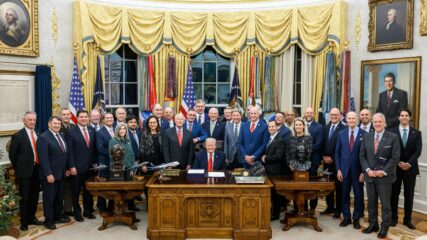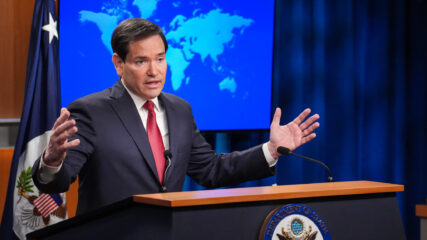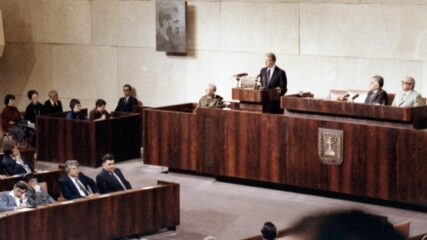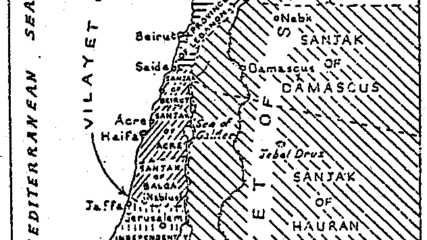May 6, 1951
As part of a 26-day visit to the United States, Prime Minister David Ben-Gurion spends the day touring some of the projects of the Tennessee Valley Authority (TVA). The main purpose of the prime minister’s trip, the first by an Israeli premier to the United States, is the launch of the Development Corporation of Israel, more commonly known today as Israel Bonds. While President Harry Truman meets with Ben-Gurion on two occasions May 4 and May 8, the trip is not an official state visit.
Upon his arrival in New York on May 3, the prime minister, who misses Israel’s third Independence Day festivities, declares, “I bring the American people the warm greetings of the people of Israel and the gratitude for the unfailing sympathy of America with our efforts for independence and regeneration. We humbly believe that by constructive work and the pursuit of liberty and peace we shall vindicate the trust placed in our future.”
On Sunday, May 6, Ben-Gurion arrives in Knoxville, Tennessee, for a two-day tour of TVA dams and facilities. TVA is a New Deal project created in 1933 by an act of Congress after President Franklin D. Roosevelt asks for “a corporation clothed with the power of government but possessed of the flexibility and initiative of a private enterprise.” TVA operates in seven states and is chiefly concerned with flood control, hydroelectricity, reforestation, fertilizer production, agricultural education and river navigation. Ben-Gurion is interested in seeing how TVA-type projects could benefit the young State of Israel.
Ben-Gurion is impressed with the scope of the projects telling a Los Angeles audience a few weeks later that it is “one of the greatest construction works of our time. … I hope that we shall be able to duplicate it, and some of your other great works of that type. We need such things desperately.”
As early as 1944, plans for a TVA-modeled project for water in the Jordan Valley is proposed by American conservationist Walter Lowdermilk, and the World Zionist Organization has adapted the idea into plans by TVA engineer James B. Hayes.
Soon after Israel’s creation, the United Nations’ Palestine Conciliation Commission in August 1949 establishes a special Economic Survey Commission to investigate the economic problems involved in finding homes for Arab refugees. The commission is headed by Gordon Clapp, the chairman of the TVA, and models much of its recommendations on TVA successes. Its final report calls for the creation of temporary public works programs to provide employment for Arab refugees. In addition to providing employment, the commission believes that these projects “will improve the productivity of the countries where the refugees now reside and can be the start of larger developments.” As the Cold War emerges and American foreign policy interests shift toward preventing the infiltration of the Soviet Union into the region, the recommendations of the Economic Survey Commission are never implemented.
Hayes’ plan, as well as a subsequent report by the TVA commissioned by President Dwight Eisenhower in 1955, creates proposals for water sharing and development along the Jordan River by Israel and Jordan. The hope is that this project will lead to economic success in resettling refugees in Jordan and that economic cooperation will result in peace treaties between Israel and her neighbors.
In 1959, the Arab League officially rejects the approach taken by the United Nations of resettlement for the Palestinian refugees being tied to economic development projects. Demanding only refugee repatriation into Israel, the Arab League also states that “the questions of economic development inherently pertain to the sovereignty of the Arab states and that they have no relation whatever to the problem of the refugees and their future.”
Israel implements aspects of the TVA plans to create the National Water Carrier, which opens in 1964.








